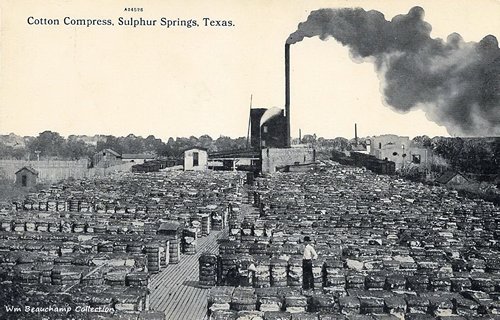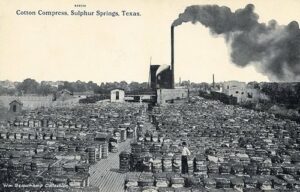History of Irish immigrants in Hopkins County


DETAILS
Hopkins County, Texas has a rich history of Irish immigrants settling in the area. Irish immigrants began arriving in Texas in the mid-19th century, and Hopkins County was no exception. Irish immigrants to Hopkins County had a deep impact on their community.
The Irish Famine, also known as the Great Hunger, was one of the main reasons for Irish immigration to the United States in the mid-19th century. During the famine, which lasted from 1845 to 1852, more than one million Irish people died from starvation or disease, and another million emigrated from Ireland to escape the devastating effects of the famine. Many of these Irish immigrants settled in cities on the East Coast, such as Boston and New York, but others ventured further west to places like Texas.
In Hopkins County, the first recorded Irish immigrant was Thomas J. Cooney, who arrived in the area in the early 1870s. Cooney was born in County Clare, Ireland, and came to the United States as a young man. He settled in Hopkins County and eventually became a successful farmer, owning hundreds of acres of land and several businesses in the area.
Other Irish immigrants soon followed Cooney to Hopkins County, and by the late 19th century, there was a thriving Irish community in the area. These immigrants brought with them their culture and traditions, including their Catholic faith. In fact, the first Catholic church in Hopkins County, St. James Catholic Church, was founded in the late 1870s by Father John O’Connell, an Irish immigrant.
The Irish immigrants in Hopkins County faced many challenges, including discrimination and prejudice. Many Americans at the time held negative views of the Irish, seeing them as inferior and uneducated. However, the Irish immigrants persevered and worked hard to build a better life for themselves and their families in Northeast Texas.
One example of this perseverance is the story of Michael P. Dowd, another Irish immigrant who settled in Hopkins County. Dowd arrived in the area in the late 1800s and worked as a farmer and businessman. He eventually became one of the wealthiest men in the county, owning thousands of acres of land and several successful businesses.
The impact of Irish immigrants on Hopkins County can still be seen today. Many of the county’s residents are descended from these early Irish settlers, and the influence of Irish culture can be seen in the area’s festivals, music, and cuisine. It’s possible that the annual Hopkins County Stew Contest derives from the Irish tradition of making communal stew.
These immigrants faced many challenges but worked hard to build a better life for themselves and their families. Today, their legacy lives on in the county’s culture and traditions.
Citations
Haggard, E.M. “History of Hopkins County.” The Portal to Texas History, University of North Texas Libraries, https://texashistory.unt.edu/ark:/67531/metapth298837/.
Manning, John. “The Great Famine and Irish Immigration to America.” The Gilder Lehrman Institute of American History, https://www.gilderlehrman.org/content/great-famine-and-irish-immigration-america.













